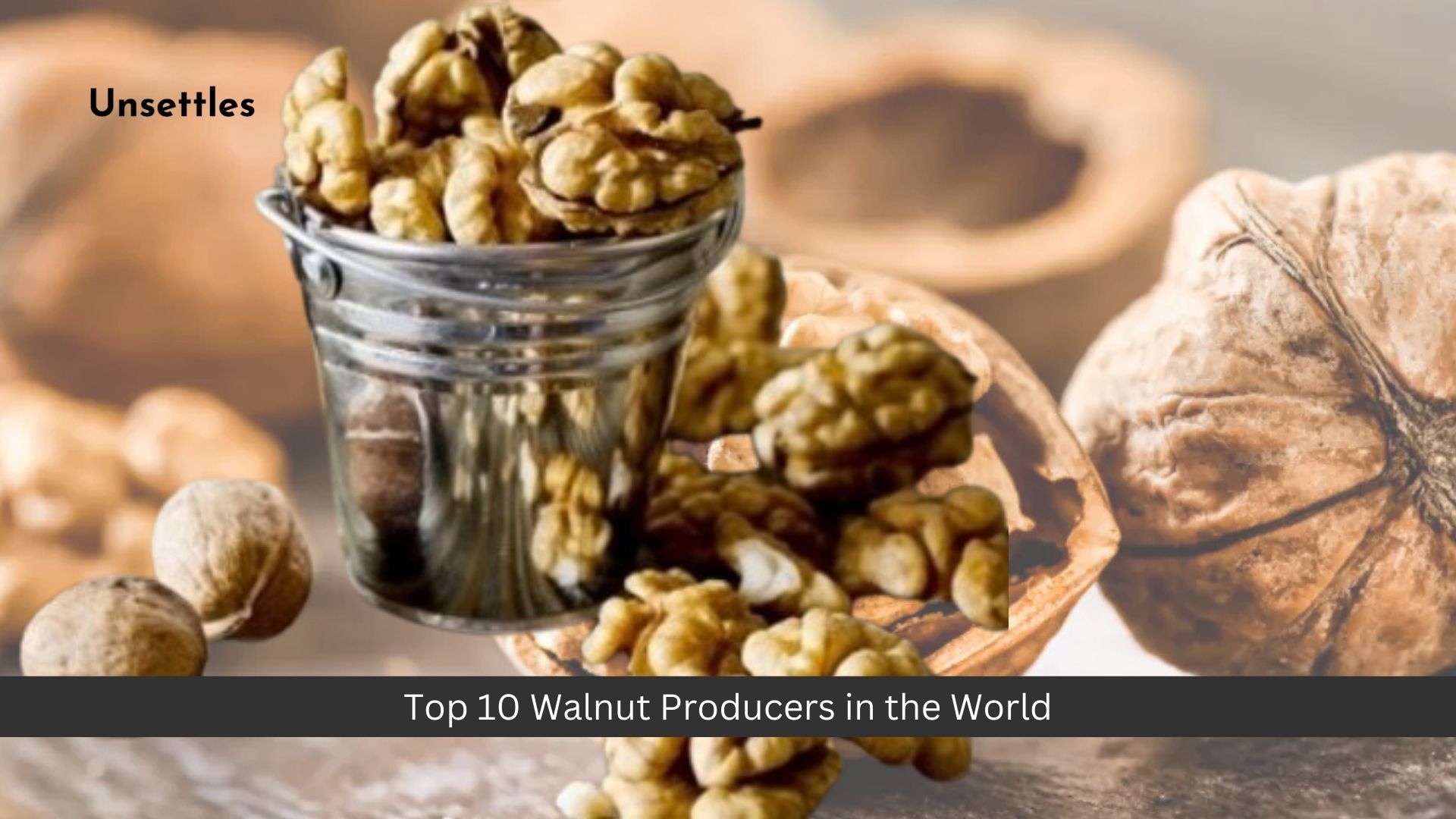Walnut Producers in the World: Walnuts are a global favorite, enjoyed for their distinct flavor, crunch, and impressive health benefits. From sweet treats to savory dishes, this versatile nut plays a crucial role in recipes around the world. As demand grows, several countries stand out as top walnut producers, each with unique cultivation methods, climates, and traditions that contribute to the global walnut supply.
Here, we take a look at the top 10 walnut-producing countries in 2024, their contributions, and how they support the worldwide demand for this nutritious nut.
Leading Walnut Producers in 2024
China – 1,100,000 Metric Tons
China is the world’s largest walnut producer, with 1,100,000 metric tons annually. Thanks to its vast agricultural landscape, diverse climates, and high-tech farming practices, China has built a walnut industry that caters to both local and international markets. Key walnut-growing regions like Xinjiang and Shaanxi leverage China’s commitment to agricultural innovation, using advanced methods like precision farming and irrigation to boost production and maintain quality. Walnut Producers in the World
Iran – 386,977 Metric Tons
Iran holds second place, producing 386,977 metric tons of walnuts yearly. Iran’s walnut industry benefits from its favorable climate, rich soils, and a deep-rooted tradition of walnut farming, especially in regions like Kerman and Markazi. Iranian farmers blend traditional methods with sustainable practices to protect both their crops and the environment, making Iran a significant supplier to the global market. Walnut Producers in the World
Turkey – 325,000 Metric Tons
Turkey ranks third globally, with an annual walnut production of 325,000 metric tons. Turkey’s diverse geography allows for walnut cultivation across various regions, each offering ideal conditions for different walnut varieties. By combining traditional farming with modern techniques, Turkey’s walnut industry continues to expand, meeting both domestic and international demand.
Chile – 148,000 Metric Tons
Chile produces 148,000 metric tons of walnuts, making it the fourth-largest producer. Central regions like Maule and Bio Bio provide optimal conditions for walnut trees, and Chile’s walnut farmers use sustainable practices to ensure high-quality, eco-friendly produce. Chile’s walnut industry not only meets local demand but also supports a growing export market. Walnut Producers in the World
Burkina Faso – 137,268 Metric Tons
With 137,268 metric tons of walnuts produced annually, Burkina Faso is a rising player in the walnut market. The country’s diversification into walnut farming has boosted its agricultural economy and created opportunities for local farmers. By adopting walnut cultivation, Burkina Faso is exploring new markets and adding variety to its agricultural portfolio.
Mexico – 135,947 Metric Tons
Mexico is another significant walnut producer, yielding 135,947 metric tons annually. Key regions like Chihuahua and Michoacán provide ideal climates for walnut trees. Mexican farmers employ modern farming techniques to improve efficiency and quality, making Mexico a reliable supplier to both local and international markets. Walnut Producers in the World
Ukraine – 115,420 Metric Tons
Ukraine’s fertile soils and suitable climate contribute to its walnut industry, producing 115,420 metric tons each year. Areas like Vinnytsia and Kherson are central to Ukraine’s walnut cultivation, with farmers taking advantage of natural conditions to produce high-quality nuts that are sought after in Europe and beyond.
Greece – 62,810 Metric Tons
Greece, producing 62,810 metric tons of walnuts, has a long tradition of walnut cultivation. Favorable conditions in Thessaly and Macedonia support walnut farming, with Greek producers blending old-world techniques with modern agriculture to remain competitive. Greece’s unique walnut varieties add diversity to the global walnut market.
Romania – 54,250 Metric Tons
Romania produces 54,250 metric tons of walnuts each year. With ideal growing conditions in regions like Prahova and Buzau, Romania focuses on sustainable practices, including water conservation and eco-friendly farming methods. This focus on sustainability helps Romania maintain its place as a respected walnut producer. Walnut Producers in the World
Uzbekistan – 47,480 Metric Tons
Uzbekistan rounds out the top 10 with 47,480 metric tons of walnuts. Known for its agricultural heritage along the Silk Road, Uzbekistan combines traditional expertise with modern technology to boost walnut production. The country’s walnut industry continues to grow, meeting both domestic and global demand for high-quality nuts.
Conclusion
The top 10 Walnut Producers in the World showcase a variety of climates, agricultural techniques, and traditions that keep the global walnut market thriving. Whether it’s China’s advanced precision farming, Iran’s traditional expertise, or Chile’s commitment to sustainability, each country’s unique approach helps meet the ever-growing demand for this versatile and nutritious nut.
FAQs about Walnut Producers in the World
What are the health benefits of walnuts?
Walnuts are packed with healthy fats, protein, and antioxidants. They support heart health, reduce inflammation, and provide essential nutrients like magnesium and vitamin E, making them a highly nutritious addition to any diet.
How does China maintain its position as the largest walnut producer?
China has a favorable climate and extensive agricultural land, which, combined with modern farming techniques like precision irrigation, helps maintain its high production levels. Major regions like Xinjiang and Shaanxi contribute significantly to China’s walnut output.
Why is sustainable farming important in walnut production?
Sustainable farming protects natural resources and ensures the long-term health of the land. Countries like Chile and Romania use eco-friendly practices to produce high-quality walnuts while minimizing environmental impact.
Which countries are major importers of walnuts?
Countries with high walnut consumption but lower production, like Germany, Japan, and the United Kingdom, import large quantities of walnuts from major producers to meet demand.
Can walnuts be grown in tropical climates?
Walnut trees typically require a temperate climate with cool winters and warm summers. Tropical climates generally don’t provide the ideal conditions for walnut cultivation, so most walnut-producing regions have a mild to cool climate.
